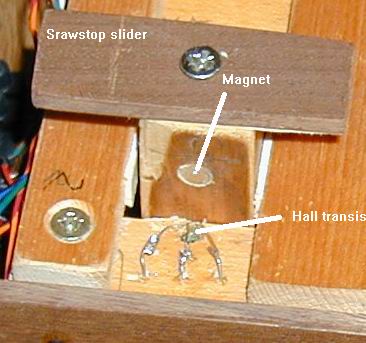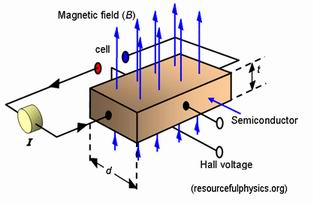

The hall effect arises because the electrons moving in a magnetic
field become deflected and so collect and cause a voltage perpendicular
to both the currect and the field. With semiconductors the sensor is
tiny and may be embedded in the frame of the drawstops. The magnet is
not much bigger, just 3mm in diameter and can be imbedded in the slider
of the drawstop. Since there is no electrical contact, the device can
work without friction. Dirt and corrosion have no effect.

It is therefore ideal for making the electrical connection to drawstops. I bought the magnets and switches from Ron Coates at "Classic Organs". The field operates over about 4mm so that alignment is not a big job. Getting the sliders to ride smoothly and uniformly through the enclosure was a much more difficult job.
The figure shows the hall transistor embedded in a hole in the drawstop casing with its three electrical leads. The drawstop slider moves the magnet in front of the transistor when the stop is pulled out.
Copyright 2006 Colin Windsor : Last updated 16/7/2006